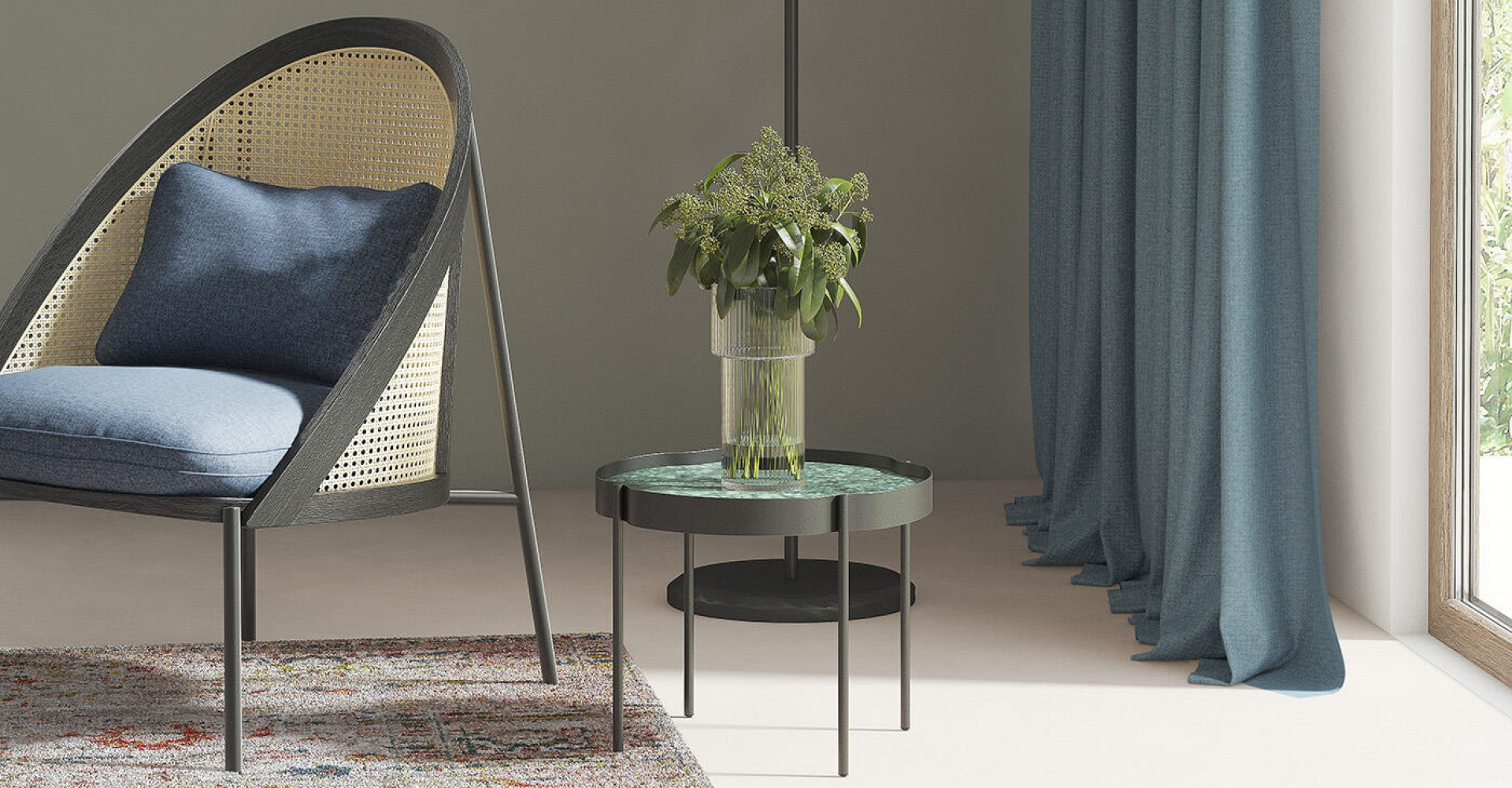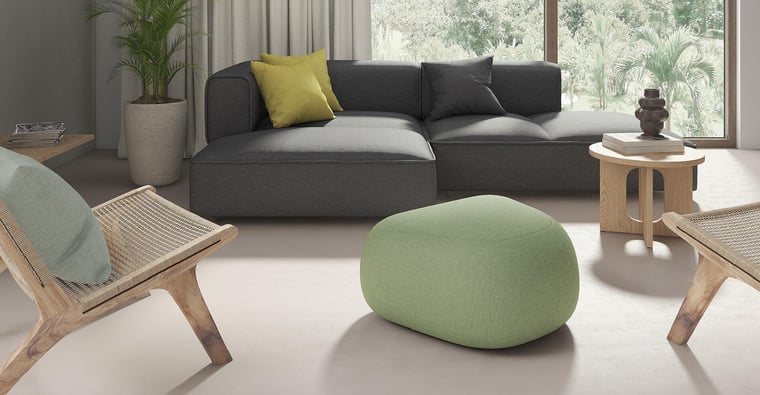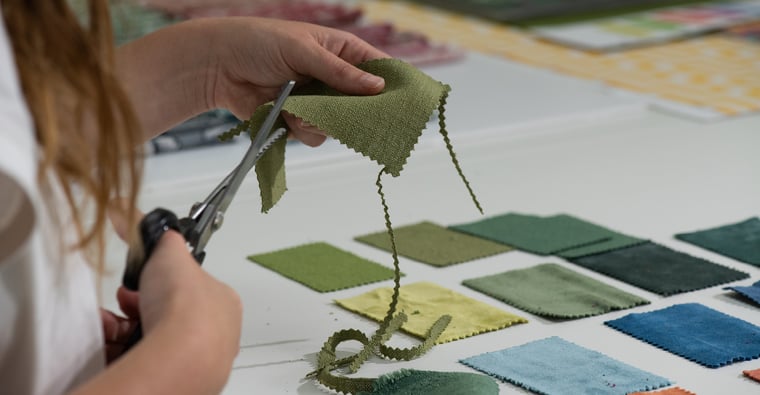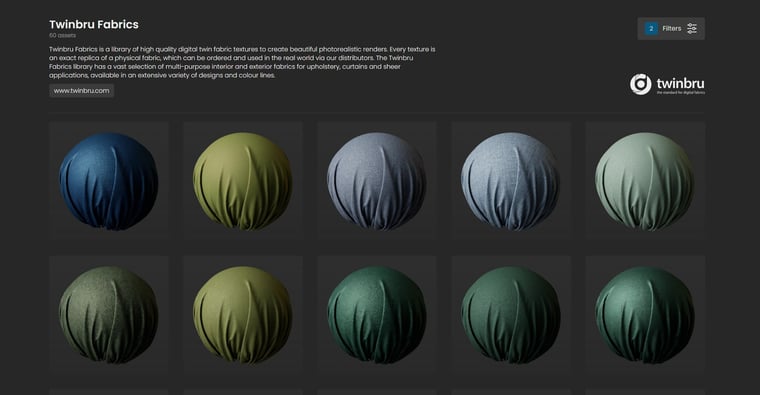
Demystifying 3D fabric textures for interior design
Published by Admin on
Nov 2, 2023 5:07:36 PM
From smart home automation to AI-generated mock-ups, there is a lot of exciting technology available for interior designers. This makes the creativity of designers even more valuable because, unlike a computer, they have to be able to listen to their client’s needs and provide solutions that are both practical and beautiful.
The challenge is that interior designers are only human. They need time to be inspired, to rest, to think, and to explore new trends and products. With this demand, what designers truly need isn’t more technology to make their clients’ spaces more hi-tech – they need solutions that allow them to expand their creativity. It’s all about efficiency and the ability to think outside the box. And this is where innovative technology like 3D fabric textures can make a difference in interior design.

Design comes first
Remember when interior designers had to draw or sketch the look of a space? They also had to drive from store to store collecting samples and then put together a mood board to show the client. It can be a tedious process and there’s no guarantee the client would approve immediately. Then it’s back to the drawing board to change things, have more meetings to refine the design, and ultimately handle who knows last-minute changes either during or after the actual installation of products. All these challenges rob the designer of the time and focus they need to design. Designing well should be the priority and technology can help create a more efficient operation for the designer who can focus on their creativity and product selections to bring their vision to life. Design can be stressful but it doesn’t have to be. 3D visualisation is making a huge difference in the world of interior design by showing what a finished space can look like with all of the products in the correct colours and even in the correct lighting situations.
All these challenges rob the designer of the time and focus they need to design. Designing well should be the priority and technology can help create a more efficient operation for the designer who can focus on their creativity and product selections to bring their vision to life. Design can be stressful but it doesn’t have to be. 3D visualisation is making a huge difference in the world of interior design by showing what a finished space can look like with all of the products in the correct colours and even in the correct lighting situations.
3D fabric textures
Now, fabrics can be tricky because people want to touch them and aren’t sure if the colour will be the same in the actual environment. This is where 3D fabric textures shine. A 3D fabric texture is a high-resolution 3D scan of a physical fabric. It captures its exact look and colour, its exact design and even its texture to perfectly match the physical fabric.
In doing so, a 3D artist can apply the fabric to furniture models as a 3D upholstery texture, apply it to a curtain installation in a room scene as a 3D curtain texture, and create multiple iterations using various fabric options. The designer and client can both see how the fabric looks on curved and straight edge surfaces, can see how the colour works under different lighting conditions, and truly get a sense of the product choice without the need for a physical fabric sample.
Using 3D fabric textures also makes the design process more sustainable. Less fabric going to waste, changes and visuals done digitally instead of physically save on transport and physical materials. It’s also more time efficient for both the designer and the client who can make confident decisions much quicker and get projects to completion on time and within budget.
There may be some trepidation thinking that accessing 3D fabric textures is quite costly or difficult. Fortunately, there are quite a few digital design platforms that address both these concerns. They allow interior designers to make use of 3D fabric textures easily and without breaking their business budget. Some even offer integration into leading design and visualisation software, and downloading from texture libraries for free.
Interior design for the future
Great spatial or environmental design isn’t just for homes or offices anymore. It’s being used in schools for optimal learning, in healthcare to promote healing, and even in virtual environments such as online gaming. We want the spaces occupied by our minds and our senses to be engaging and fulfil our needs, so we trust professionals to help us achieve that.
Interior design is doing well to embrace digital solutions. From digital fabric sampling software to 3D scene rendering and 3D virtual reality visualisation, much is on offer to help designers raise the bar within their sector and also future-proof their business for an increasingly digital world. Twinbru is ready to support the future goals and ambitions of the interior design world and we encourage you to have a look at our Interior Concepts use case to learn more.
Tags:
Fabric,
Interior Design,
3D Visualisation,
Interior Concepts,
3D Fabric Textures,
Digital Transformation